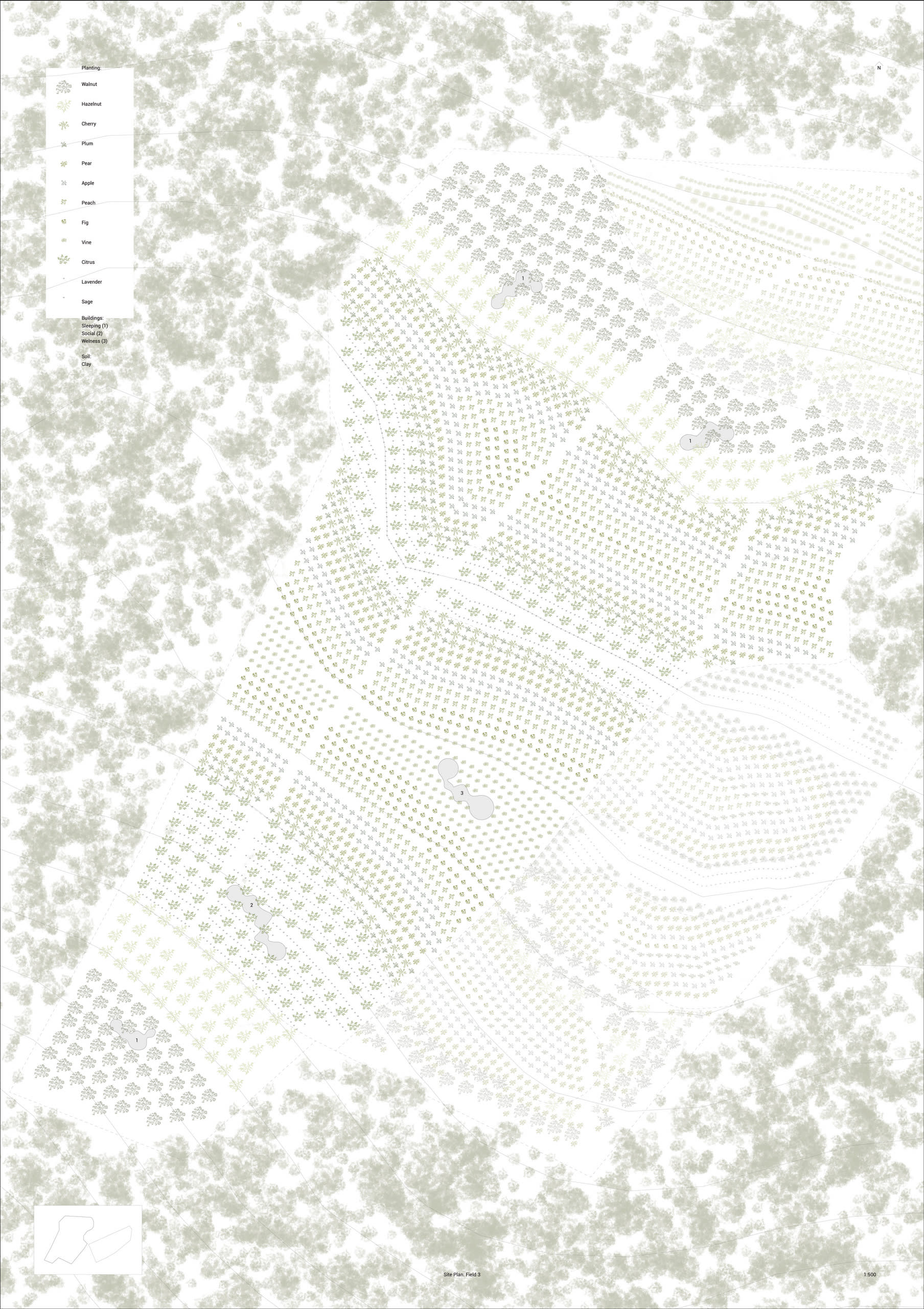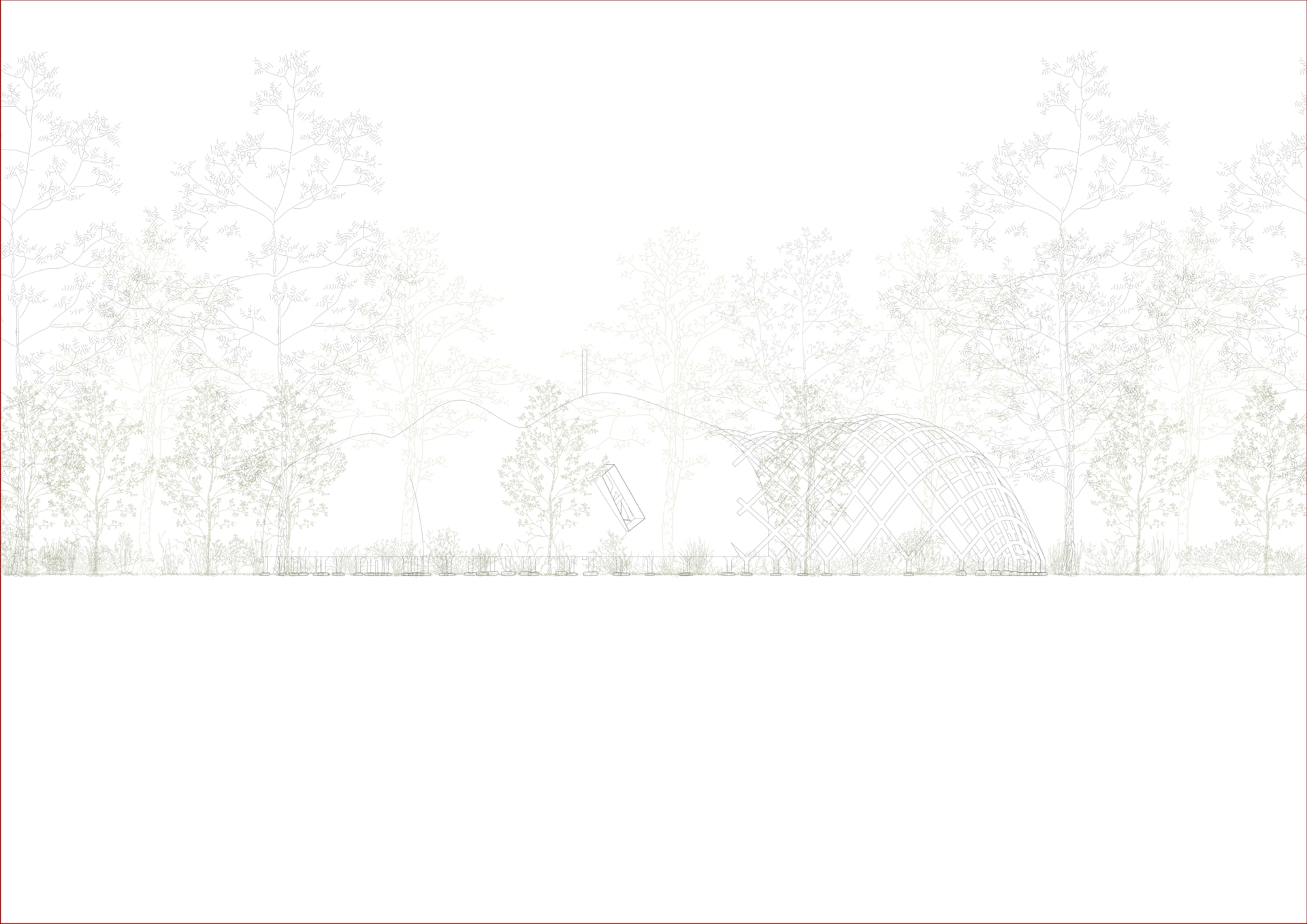Queering Agriculture; transforming the Southern French rural landscape into a communal inheritance of land ownership and alternative land use. Proposing a living and working environment benefiting both humans and plants which responds specially to the site’s social and geographical setting. Taking the traditional farm as context, this proposal is going against mono-crop agriculture, usually owned by a single individual and transmitted hereditary by male figures of the same family. Instead, through a “queering process”, offering an alternative system of site specific polyculture where land is used and owned cooperatively by queer farmers. This queering process consists of three key moves, challenging the land ownership model, from individual ownership to cooperative ownership, land use from single practice to the coexistence of multiple practices and the farmhouse itself by enabling co-habitation between humans, plants and land.
Jean-Baptiste Coulomb


Personally experiencing this context by growing up queer in a village in the south of France, in a family of farmers and seeking alternative inheritance practices and rituals around agriculture to include queer people. The village major industry is wine production, and since 1972, has been arranged around a cooperative of about 200 small land owners and farmers of which my family is part. The land is divided by an ancient cadastre transmitted hereditary typically from fathers to sons who are expected to carry the family’s farming tradition, valuable specific knowledge of that land is transmitted in the same manner. The current agricultural landscape around the village follows traditional methods. Rows of vine plants are supported by metal stakes and cables in a neat arrangement facilitating an efficient, mechanical labor. Both the way land is owned, through a hereditary transmitted cadastre, and though the way it is laid out for agricultural production creates a specific framework for domestic and work life to unfold; impacting the individuals who can use that land and the way in which it can be used. And upon closer inspection, we can argue that this framework in fact supports traditional heteronormative values through established gender roles, hereditary lineage and land ownership. Leaving no room for any queer narrative or other forms of ownership and land use. Transforming an existing parcel of land of a total surface of around 25 acres, on my family’s vineyard in the South of France with the queering process previously described.




Proposing a manually tended form of agriculture will require an increased workforce on the site. Assuming that a farmer, on average, can tend to around 2 to 3 acres of land manually on their own, 12 farmers will be looking after this site. This will call for a new form of occupying the land by communally living on it and cohabiting the landscape with the plants. Proposing a total of 11 buildings on this site, dividing the different programs of communal farmhouse living into separate units. Each building has been associated with plants who’s properties can benefit the living environment’s specific needs which informed the location of each program on the site, equally the building’s massing reflects the surrounding plants and topography. Challenging gender roles by rearranging the living spaces in common and sleeping spaces around different flexible arrangements suitable for alternative relationships between its inhabitants. Shifting land ownership and hereditary lineage by placing the living environments within the paths around the fields with entrances facing the path itself rather than a field. Each path can be seen as a boundary between fields, meaning the living space sits on the boundary, rather than within a boundary, that way ownership of either side of the boundary cannot be claimed and remains neutral. Farmers will also specialise in specific crop maintenance which means, based on the proposed arrangement of the crops that no field can be claimed by a specific farmer as one crop can be found at various points in each field.





The sleeping spaces are arranged under the canopy of tall trees, Hazelnuts, Walnuts, Almonds, providing a sheltered intimate space from their branches and foliage and surrounded by aromatic plants such as lavender which promotes sleep. Communal spaces are arranged around shorter plants providing visual connection between people and views across the site. The communal kitchen is surrounded by aromatic plants, rosemary, sage, thyme, used for cooking. In order to integrate the domestic environments with the surrounding landscape and plants, each living environment also follows the seasons similarly to the plants by providing spaces for seasonal use, both internal for winter months and external for summer months. This inhabitation is provided by a grid-shell timber canopy which is partially enclosed by a mirrored aluminium facade. The exposed canopy also serves as a structure for plants to grow, such as vines, providing shade in summer months with a dense foliage and letting light through in winter months when the leaves have fallen off. Internal separation is achieved without the use of any walls, instead the bending form of the grid shell canopy, set between surrounding trees provides intimacy between spaces. The buildings are elevated from the ground and come in contact with it lightly in an effort to reduce their impact on the surrounding flora and soil quality.



The mirrored facade is made from lightweight aluminium sheets and create a distorted vision of its surroundings whilst attempting to blend in the landscape, where the domestic objects and the working environment becomes one. Refusing traditional binaries and harsh lines dividing the current landscape. Instead, a softer division between spaces blurring their boundaries and establishing new dynamics allowing a queer life to happen which does not follow the norms of traditional domestic spaces and division between agricultural landscape and domestic space.Transforming this Southern French rural landscape into a communal inheritance of land ownership and alternative land use, a living and working environment benefiting both humans and plants, through a “queering process”,challenging the land ownership model, from individual ownership to cooperative ownership, land use from single practice to the coexistence of multiple practices and the farmhouse itself by enabling co-habitation between humans, plants and land.


